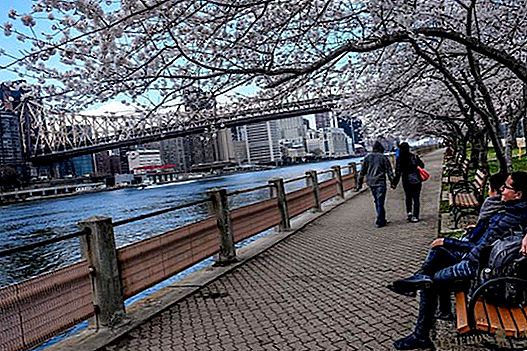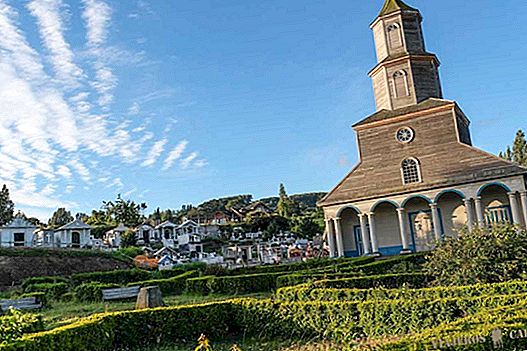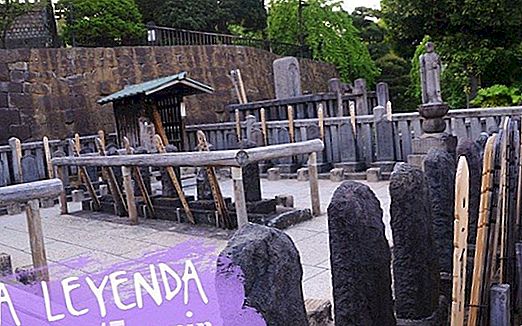Anyone who has ever been interested in Japanese culture and more specifically in the samurai code, will have ever heard the “Legend of the Loyal 47 ronin". Lately it is becoming very popular especially thanks to the remake of "47 Ronin" of 2013 starring Keanu Reeves. But ... is it all part of a legend or did it really happen? I'm just going to give you a name: Sengaku-ji Temple. If you want to know more about this story read on ...

The year was 1700, in the middle of the feudal era of medieval Japan. The country was divided into territories, each at the hands of a feudal man, or daimyo, which had a more or less large group of samurai who watched over his life.
One of these daimyos called Asano Takumi No Kami he received the commission himself Shogun (the warlord, the greatest military command of Japan at this time) to prepare a treat to receive guests from the imperial family. But Asano, humble lord where there are them, was not very told in tag stories and asked for help from one of the protocol masters of the bakufu and great connoisseur of courtly life:Kira Kozukenosuke; for which he sent some presents that Kira found very insufficient, almost an affront. However, he did not give up the challenge and agreed to lend him a hand, although then we will see how the hand threw it, but around his neck.
Kira, a difficult, perverse and envious guy taught Asano the arts of protocol, but in the wrong way, looking for his evidence in front of the emissaries and the emperor himself and therefore his fall. Asano, wounded in his pride, faced Kira in the palace itself, even drawing his sword and attacking his adversary by injuring him in the face.
The shogun Tokugawa Tsunayoshi did not tolerate such disrespect and ordered Asano to commit seppuku (better known as harakiri, we will crack the gut until the insides go out and then die beheaded). Before a sentence of the warlord, one could not fight and Asano ended up fulfilling suicide with honor.
The samurai who were under the orders of Asano were then left without the figure of a lord to defend and in these cases, following the samurai code, it was normal for them to commit seppuku themselves. But this case was different and they gave up the honor of their lord - apparently - and preferred a life of ronin, that is, wandering walkers without the protection of a lord, who wander in search of specific jobs. But before leaving they signed an honor pact for which they swore revenge on Kira.
Of all those who signed the pact were 47 ronin who met again two years later, withÔishi Kuranosuke, former adviser of the clan, at the head. After this prudential time in Kira, the idea that they could retaliate against him had dissipated, however, he could not be more wrong. The 47 samurai entered his palace and dodged the iron defense that protected the lord by reaching his bedroom. There he was offered to commit sepukku to keep his honor, but Kira, a filthy and apparently cowardly typer, was not able and Ôishi cut off his head using the samewakizashi with which, two years earlier, his lord had used to end his life.

When the news reached the ears of the Shogun, he had no choice but to sentence the 47 samurai to death. On December 14, 1702, despite the contrary voices of the people, who admired the value of these heroes, the 47 ronin, kneeling side by side, opened their guts together and were beheaded at the same time.
The remains of these formidable warriors were placed in graves around the place where their lord rested, protecting him even in the afterlife, and today they can be visited.
The exact place is the Sengaku-ji temple, in the southwestern part of Tokyo. So far I approached to check with my own eyes if these tombs really existed and, if so, to be able to surround myself with that mysticism of legends in which honor is everything.
And there they were, the 47 tombs of the 47 most famous ronin in Japan, plus that of Mr. Asano who, wherever he is, probably feels very proud of his samurai.

USEFUL INFO
How to get: There are two ways to do it: easy and thehard. I, of course, chose the difficult one. As I arrived walking from the northern part of the temple, I got into an alley that surrounded a school and, by chance, hit the temple. Right at the entrance of the alley there is a sign in Japanese and instinct told me that I put something on the temple. It seems that you get into private homes, courtyards and mazes, but in the end you reach the temple. I leave the route map:
The easy way is to arrive from the main street on your right, which leads directly to the entrance door of the temple.
Once there, the area of the graves is on the right past the door. You do not have to pay anything to enter.











